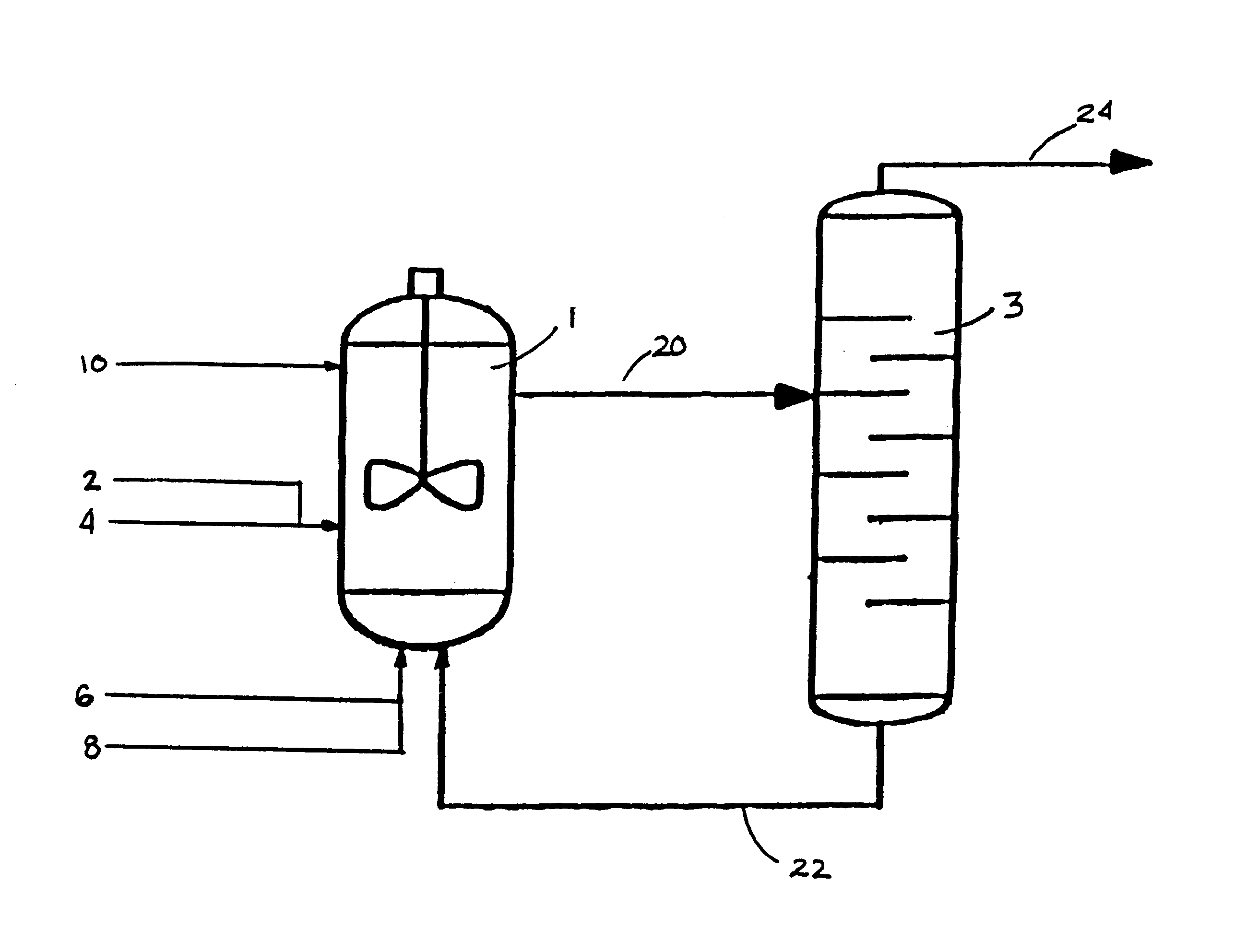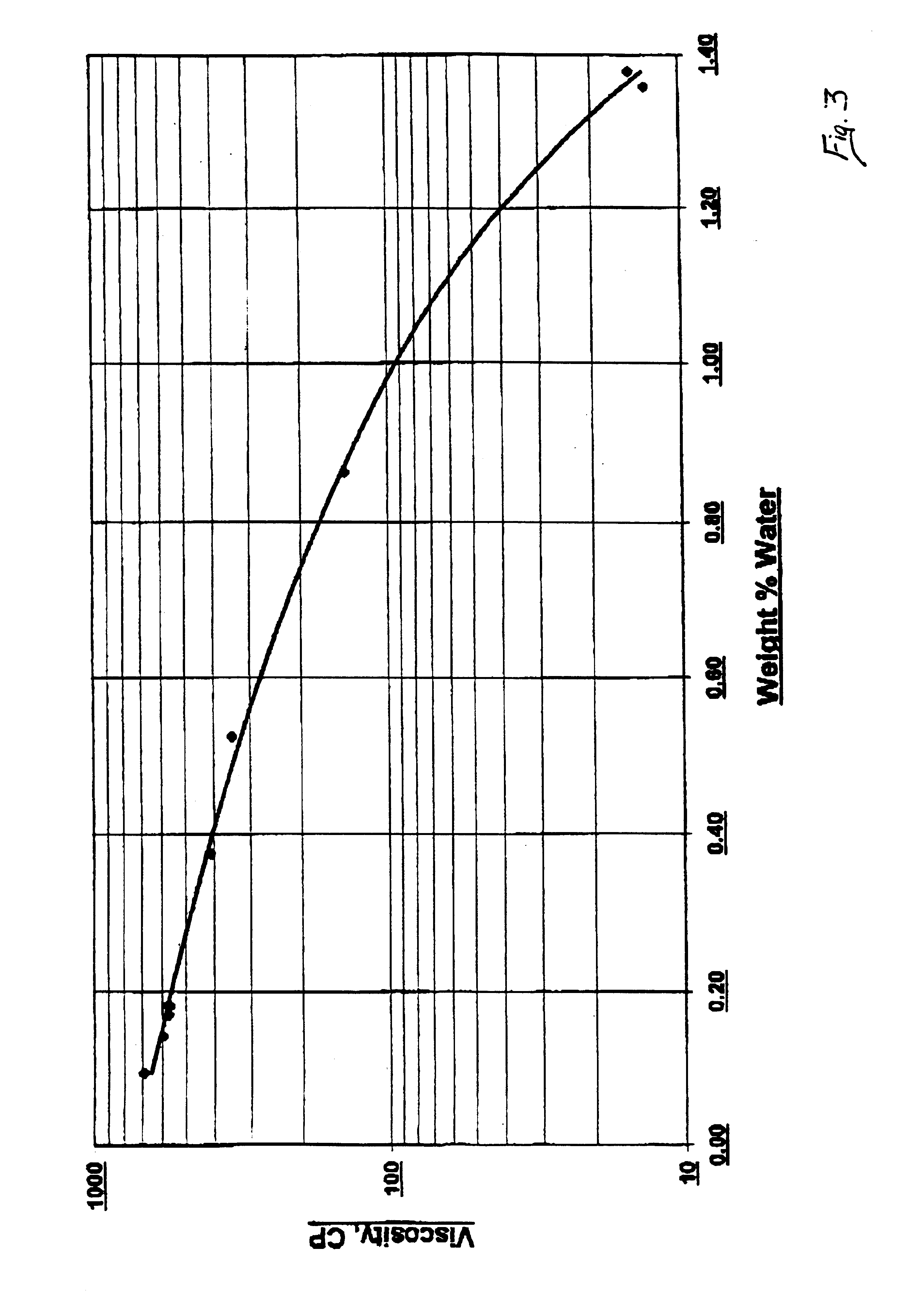Process for forming vinyl ester from carboxylic acid with water treatment of the reaction mixture
- Summary
- Abstract
- Description
- Claims
- Application Information
AI Technical Summary
Benefits of technology
Problems solved by technology
Method used
Image
Examples
example 1
[0025]500 gram samples of reaction mixtures containing CIO Neo Acid and Zinc Neo-decanoate having varied water contents were reacted with 300 ml / min of acetylene in a batch reactor at 205° C. and 1 atm., with stirring (2″ diameter stirrer rotating at 1750 rpm). The reaction rate of the sample reactions and water contents of the reaction mixtures are shown in Table 2. The data of Table 2 demonstrates that a decrease in the water content of the reaction mixture results in faster rates of reaction.
[0026]
TABLE 2Final Vinyl EsterInitial H2O ContentReaction TimeSolution Content(wt. %)(hrs.)(wt. %)0.604.0011.80.202.5049.10.152.2545.70.051.5043.8
example 2
[0027]The water content of a base reaction mixture (500 grams) containing 50 wt. % Zinc Neodecanoate, 25 wt. % Neo Acid and 25 wt. % anhydride at 205° C. was determined to be 0.03 wt. %. A second reaction mixture, identical to the base reaction mixture was prepared and 7 ml. of H2O was added thereto. Each of the base reaction mixture and the second reaction mixture were allowed to react for 15 minutes, at which time the amount of anhydride by-product was measured. A comparison of results is shown in Table 3, and demonstrates that addition of water to the reaction mixture, during the reaction, is effective in converting anhydride by-product to useful neo-acid reactant.
[0028]
TABLE 3wt. % H2Owt. % Anhydride(1)Base Mixture0.037.7(2)Base Mixture +7 ml H2O—0.1
PUM
| Property | Measurement | Unit |
|---|---|---|
| Temperature | aaaaa | aaaaa |
| Temperature | aaaaa | aaaaa |
| Temperature | aaaaa | aaaaa |
Abstract
Description
Claims
Application Information
 Login to View More
Login to View More - R&D
- Intellectual Property
- Life Sciences
- Materials
- Tech Scout
- Unparalleled Data Quality
- Higher Quality Content
- 60% Fewer Hallucinations
Browse by: Latest US Patents, China's latest patents, Technical Efficacy Thesaurus, Application Domain, Technology Topic, Popular Technical Reports.
© 2025 PatSnap. All rights reserved.Legal|Privacy policy|Modern Slavery Act Transparency Statement|Sitemap|About US| Contact US: help@patsnap.com



